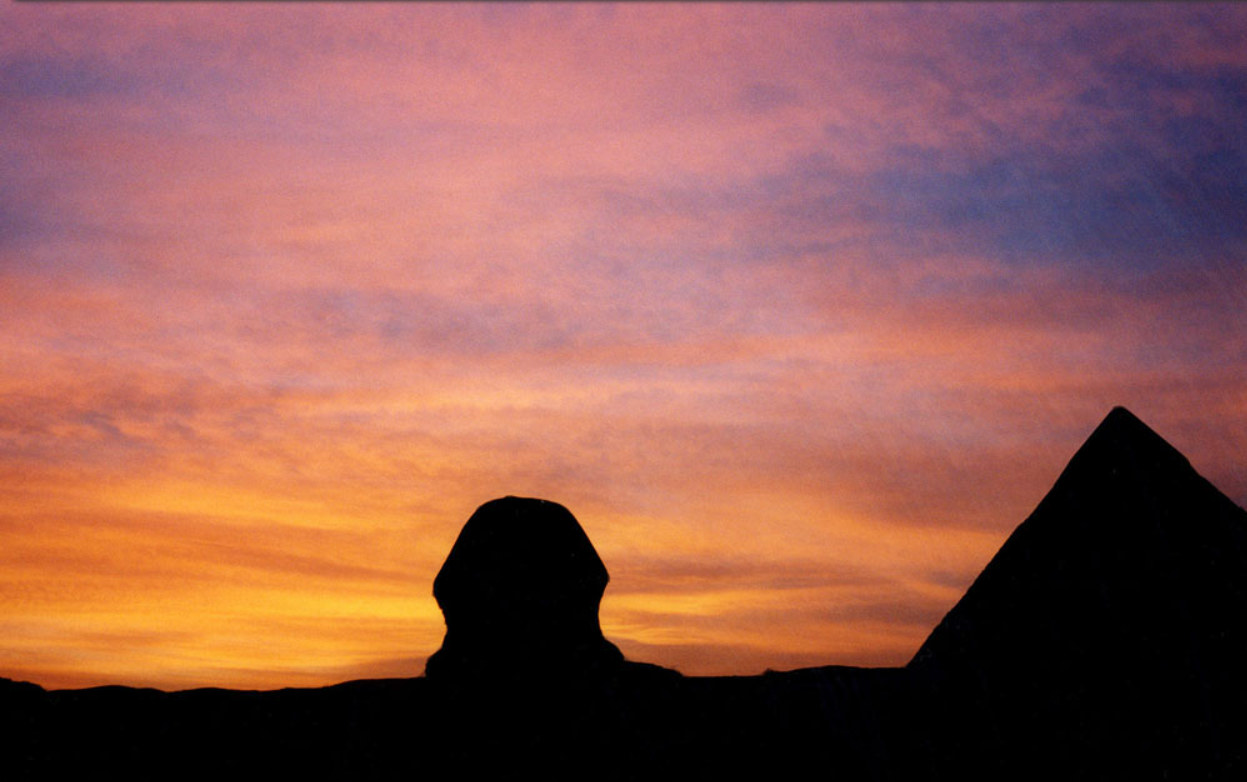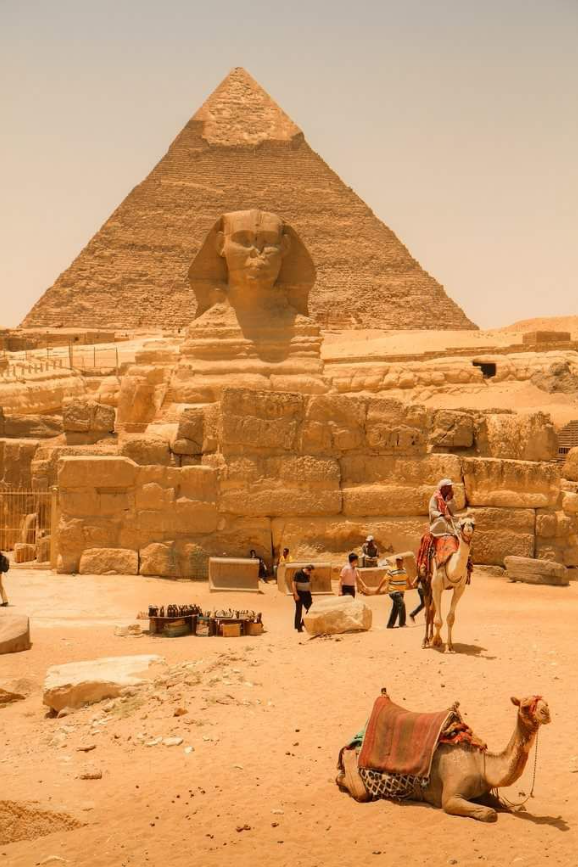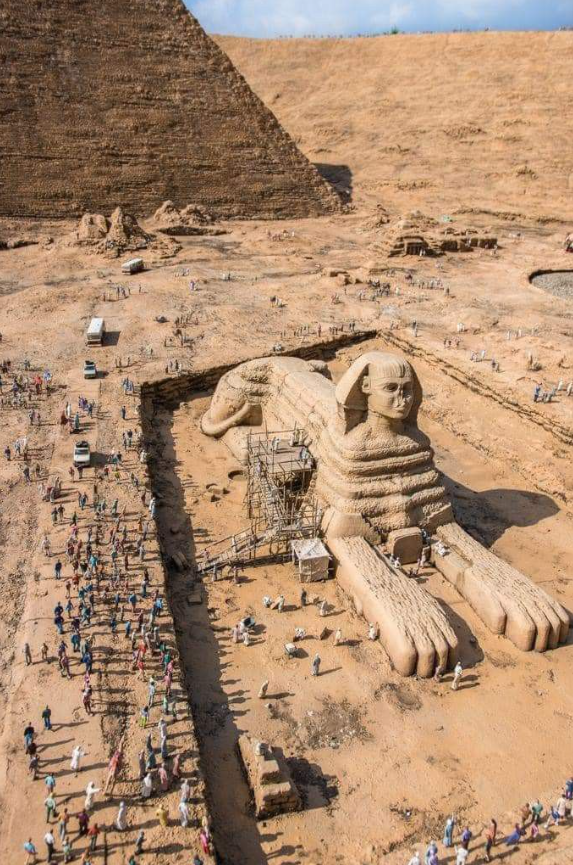The image of the Sphinx has always sparked a deep fascination among people. This mythological guardian, combining the features of a human and a lion, has inspired painters, sculptors, writers, and filmmakers to create works that reflect the enigmatic essence of the ancient world. In this article, we will trace how the Sphinx has been portrayed in ancient, medieval, and modern culture, and examine its popularity in mass culture—from paintings and sculptures to films, books, and video games.
Introduction
The Sphinx is not merely a mythological creature but a symbol that has evolved over thousands of years, acquiring new meanings along the way. In antiquity, it was regarded as a keeper of mysteries and wisdom; in the Middle Ages, it came to symbolize a challenging trial for those in search of knowledge; and in modern culture, it serves as a source of inspiration for a wide range of creative and entertainment projects.
This article offers a journey through time to understand how the image of the Sphinx has transformed and continues to influence art and culture. We will examine key stages in its depiction through art, as well as analyze why its symbolism remains relevant today.
The Sphinx in Ancient Art and Culture
The ancient world left us a rich heritage of myths and legends, and the Sphinx occupies a special place among them. Greek mythology, in particular, immortalized the Sphinx through its role in the story of Oedipus, where the creature posed a famous riddle about the human journey. However, it wasn’t only myth that celebrated the Sphinx; ancient visual arts also captured its image.
Imagery and Symbolism
- Greek Vase Paintings and Reliefs:
In various ancient artifacts, the Sphinx is often depicted as a mysterious creature with a human head and a lion’s body. Its image served as a reminder of the necessity to overcome challenges in order to attain wisdom. - Mythological Scenes:
Artists portrayed scenes in which the Sphinx tests heroes by posing riddles, emphasizing its role as an evaluator of human intellect and spirit. Over time, the image of the Sphinx became a symbol of transformation—the transition from ignorance to knowledge.
Cultural Significance in Antiquity
The Greeks viewed the Sphinx not only as a physical threat but also as a carrier of deep philosophical meaning. Its riddle became a metaphor for the journey of life, where every decision and challenge leads to personal growth. This image became an integral part of the mythological tradition, embodying the idea that truth is often concealed within complex and enigmatic questions.
The Sphinx in Medieval Art and Mythology
The transition from antiquity to the Middle Ages brought about transformations in many mythological images, and the Sphinx was no exception. Medieval artists and writers reinterpreted its image in the context of spiritual quests and alchemy, endowing it with new symbolic meanings.
Religious and Alchemical Associations
- The Sphinx as the Guardian of Secrets:
In medieval culture, the Sphinx was often seen as the keeper of ancient wisdom and sacred mysteries. Its riddles were associated with the search for higher truth, accessible only to the worthy. - Alchemy and Philosophy:
Many alchemists regarded the Sphinx as a symbol of transformation. Much like the process of turning base metals into gold, the Sphinx’s enigmas suggested that overcoming hardships leads to the attainment of ultimate understanding and spiritual enlightenment.
Medieval Visual Arts
- Manuscripts and Illuminated Miniatures:
Medieval manuscripts frequently featured illustrations of the Sphinx as a mysterious guardian of hidden knowledge. These works were often adorned with symbolic elements that underscored the creature’s dual nature. - Architectural Decoration:
The image of the Sphinx sometimes appeared in the ornamentation of churches and castles, where it symbolized protection against evil and uninvited forces. Sculptures and carved details inspired by the myth added an aura of mystery and ancient wisdom to these structures.
Its Role in Literature
Medieval literature also embraced the Sphinx. Poets and writers used its image as a metaphor for the quest for hidden truths, inviting readers to seek the deeper meaning concealed behind the surface of everyday life. This literary use added a new philosophical and spiritual dimension to the myth of the Sphinx, resonating with the medieval worldview.
The Sphinx in Modern Art and Culture
In the contemporary world, the image of the Sphinx has undergone significant transformations, gaining new nuances within the contexts of postmodernism and the digital age. Despite the diversity of interpretations, its core symbolism—mystery, wisdom, and challenge—remains unchanged.
Influence on Contemporary Visual Arts
- Modern Paintings and Sculptures:
Artists of the 21st century frequently turn to the image of the Sphinx to express ideas about the search for meaning amid the chaos of modern life. Contemporary sculptures, often crafted from metal, glass, and other materials, reimagine the classical image with elements of abstraction and futurism. - Street Art and Graffiti:
The Sphinx also appears in street art—vivid murals on urban walls depict the mythic guardian as not only an emblem of ancient wisdom but also as a symbol of resistance against modern conventions and stereotypes.
Literature and Cinema
- Books and Poetry:
In modern literature, the Sphinx is often used as a metaphor for the quest for self-knowledge and truth. Novels, short stories, and collections of poetry draw on its enigmatic presence to create an atmosphere of mystery and depth. - Films and TV Series:
Both Hollywood blockbusters and independent films have repeatedly explored the theme of the Sphinx. In cinema, it can serve as a symbol of an ancient mystery that shapes the fate of characters or as a mystical artifact opening doors to other worlds. - Video Games:
In the gaming industry, the Sphinx frequently appears as a boss character or a crucial figure who challenges players’ problem-solving skills. Games based on mythology incorporate complex puzzles inspired by the Sphinx’s legends, keeping its allure alive for a younger audience.
Popularity in Mass Culture
The image of the Sphinx has become a powerful cultural symbol, widely used in mass media. It can be found on book covers, in advertising, and even in the design of fashionable accessories. Here are several reasons why the Sphinx remains so popular in contemporary culture:
- Universal Symbolism:
The Sphinx embodies both mystery and strength, making it appealing to diverse audiences. - Connection to Antiquity and Mysticism:
In a world dominated by rapid technological progress and scientific advancement, many people look to ancient traditions and spiritual roots for grounding. The Sphinx serves as a bridge between the past and the present. - Aesthetic Appeal:
The classic image of the Sphinx—with its majestic form and expressive features—continues to inspire designers, architects, and artists, creating visually striking representations in modern art.
Key Factors Behind the Sphinx’s Popularity in Mass Culture
To better understand why the image of the Sphinx is so enduring in mass culture, consider the following factors:
- Mystical Aura:
The Sphinx has always been associated with secrets and enigmas, making it an attractive motif in films, literature, and video games where mystery plays a central role. - Multiplicity of Interpretations:
The Sphinx can be seen in many ways—as a symbol of wisdom, a test, or even a warning. This versatility allows creators to adapt its image to a wide range of contemporary themes. - Cultural Heritage:
The Sphinx is an integral part of world cultural heritage. It connects the traditions of ancient Egypt, classical Greece, and medieval mysticism, making it a universal symbol that resonates with people around the globe. - Visual Power:
Its harmonious proportions, commanding pose, and enigmatic expression ensure that the Sphinx remains a constant source of inspiration for modern artists and designers.
Conclusion
The image of the Sphinx in art and culture has journeyed from ancient myths to contemporary blockbusters. It has evolved, transformed, and acquired new meanings, yet it remains a symbol of eternal mystery and the quest for truth. From ancient vase paintings and reliefs to modern films and video games, the Sphinx continues to embody strength, wisdom, and enigma.
Key Takeaways:
- Multiplicity of Interpretations:
The Sphinx serves as a wellspring of inspiration across various artistic disciplines—from classical painting to modern digital art. - Bridging Past and Present:
The Sphinx remains a crucial link between ancient wisdom and modern quests for meaning, serving as a bridge between different eras. - Mass Culture Appeal:
Films, literature, TV series, and video games all draw on the powerful symbolism of the Sphinx, ensuring its place in contemporary culture. - Universal and Aesthetic Appeal:
Thanks to its unique form and rich symbolism, the Sphinx captivates both art lovers and a general audience, reflecting deep cultural roots that continue to inspire.
Additional Recommendations
For further exploration of the topic “The Image of the Sphinx in Art and Culture,” consider the following approaches:
- Infographics and Video Materials:
Create visual content that illustrates the evolution of the Sphinx’s image over time, enhancing the article’s appeal and clarity. - Interviews with Experts:
Incorporate interviews with art historians, cultural critics, and contemporary artists to delve deeper into the symbolism and modern interpretations of the Sphinx. - Comparative Analysis:
Conduct a comparative analysis of how the Sphinx is portrayed in various cultural contexts around the world to broaden the scope of the discussion and demonstrate its universal impact.
Thus, the image of the Sphinx remains one of the most inspiring and multifaceted symbols, representing not only the mysteries of antiquity but also the timeless pursuit of wisdom and truth. Its portrayal in art and culture—from ancient masterpieces to modern media—demonstrates that the enigma of the Sphinx continues to live in the hearts and minds of people, inspiring new discoveries and creative quests. The evolution of this mythic figure illustrates how ancient traditions can be seamlessly integrated into modern thinking, providing a wellspring of inspiration for future generations.
The Sphinx endures as a symbol of layered cultural significance, uniting the past and the present in an image that will always resonate with those who seek to understand the profound mysteries of human existence.




